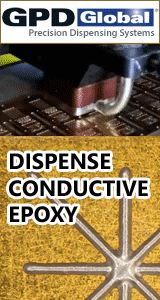Printed Circuit Board Assembly & PCB Design Forum
SMT electronics assembly manufacturing forum.
- SMTnet
- »
- Electronics Forum
- »
- Convection Oven and thermo profiling of Circuit Boards
Convection Oven and thermo profiling of Circuit Boards
![]() We just bought a new Heller 1800 EXL reflow oven for r...
- Apr 17, 2000
by
We just bought a new Heller 1800 EXL reflow oven for r...
- Apr 17, 2000
by
![]()
![]() Sounds like a true IR guy to me!!!
Your profile should ref...
- Apr 17, 2000
by
davef
Sounds like a true IR guy to me!!!
Your profile should ref...
- Apr 17, 2000
by
davef
![]()
![]()
![]() Let me be more specific about my dilema. We have used...
- Apr 18, 2000
by
Let me be more specific about my dilema. We have used...
- Apr 18, 2000
by
![]()
![]() Russ:
you could divide your 600 in let's say 10 or more ca...
- Apr 19, 2000
by
Arturo
Russ:
you could divide your 600 in let's say 10 or more ca...
- Apr 19, 2000
by
Arturo
![]()
![]()
![]() You need a KIC profiler whitch is able to find optimal prof...
- Apr 19, 2000
by
You need a KIC profiler whitch is able to find optimal prof...
- Apr 19, 2000
by
![]()
![]() Let me see if I've got this straight...rather than hook up ...
- Apr 19, 2000
by
Let me see if I've got this straight...rather than hook up ...
- Apr 19, 2000
by
![]()
![]() If you can divide your boards into different categories it ...
- Apr 19, 2000
by
If you can divide your boards into different categories it ...
- Apr 19, 2000
by
![]()
![]() My agreement with all this started by Arturo's message...
...
- Apr 24, 2000
by
Erhan
My agreement with all this started by Arturo's message...
...
- Apr 24, 2000
by
Erhan
![]()
![]()
![]() If I were you, I would divide my boards into categories...a...
- Apr 25, 2000
by
If I were you, I would divide my boards into categories...a...
- Apr 25, 2000
by
Russ Cutler
- SMTnet
- »
- Electronics Forum
- »
- Convection Oven and thermo profiling of Circuit Boards
.gif)






